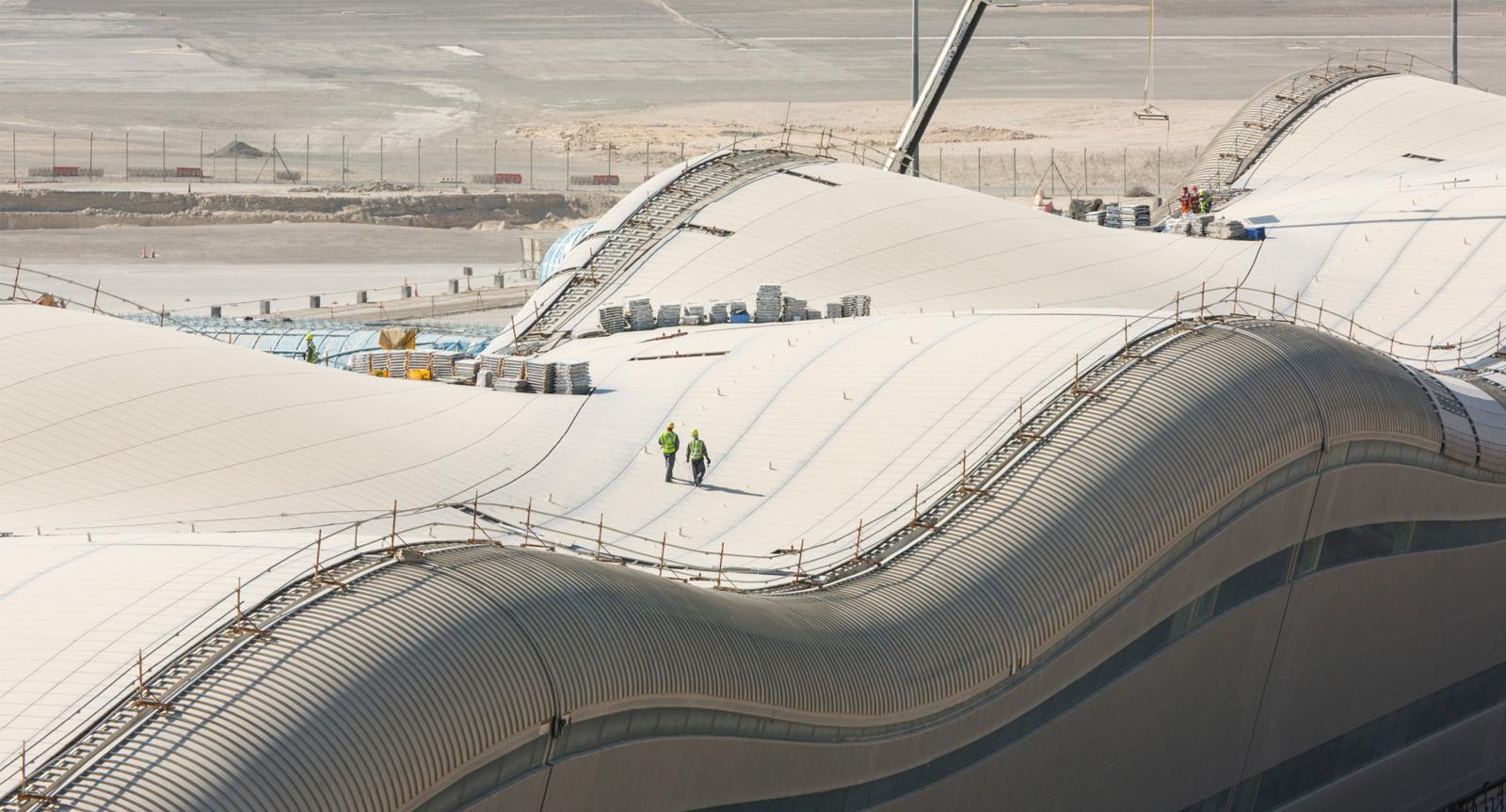Abu Dhabi International Airport
Project
Published by:
Datasheet
Company: Consolidated Contractors Company
Location: Abu Dhabi, United Arab Emirates
Year of the project: 2016
Published: 06/11/2017
Description
The client’s vision for the new Midfield Terminal Building project was both exciting and ambitious. It would involve the design and construction of a complete terminal building including passenger and cargo facilities, duty-free shops, and restaurants for a total capacity of up to 40 million people per year. The unique, X-shaped building would be located between two runways, making design and construction particularly difficult. “The client also wanted the design to provide an open and airy feel by incorporating large, column-free zones with steel-leaning arches supporting the soaring roof,” explained CCC Manager IS-Automation and Engineering Project BIM Manager, Issam El-Absi. “The complexity of the structure in both design and shape posed a number of unusual engineering, construction, and procurement challenges.”
Because of the complexity and scale of the project, the client, the Abu Dhabi Airports (ADA), required the main contractor awarded the contract to develop, communicate, and share a comprehensive BIM solution for all disciplines – including subcontractors and manufacturers. Using a BIM-driven process would facilitate the delivery of the project through the entire project lifecycle – and ultimately help to minimize risk and to ensure project success.
The TCA-JV was chosen as general contractor for this project because of its many years of experience using BIM to drive large, complex projects to completion. The company focused on other aspects of operationalizing BIM, including the development of trade-specific electronic data interchange (EDI) documents for each subcontractor to enable seamless data interchange with the BIM system. El-Absi explained, “Every subcontractor and stakeholder must comply with our EDI requirements so that we can take everyone’s information and put it into our BIM environment – consolidating it and solving interoperability and interchange issues along the way.”
The data contained in ProjectWise, which is tightly integrated with other engineering systems, is used to drive all other BIM processes. For example, employing AECOsim Building Designer for 3D modeling, stakeholders performed highly accurate material take-offs using data embedded in 3D models. “ This approach allowed us to reduce the number of people needed for the quantity surveying team by 90 percent – from 60 people to six,” stated El-Absi. BIM workflows also reduced the man-hours needed to develop shop drawings. “We managed to save 119 days and USD 65,000 in the production of shop drawings for just one blockwork zone. And this is just the ROI for using this technique on one zone for one discipline. The project has about 120 zones,” added El-Absi.
Because of the complexity and scale of the project, the client, the Abu Dhabi Airports (ADA), required the main contractor awarded the contract to develop, communicate, and share a comprehensive BIM solution for all disciplines – including subcontractors and manufacturers. Using a BIM-driven process would facilitate the delivery of the project through the entire project lifecycle – and ultimately help to minimize risk and to ensure project success.
The TCA-JV was chosen as general contractor for this project because of its many years of experience using BIM to drive large, complex projects to completion. The company focused on other aspects of operationalizing BIM, including the development of trade-specific electronic data interchange (EDI) documents for each subcontractor to enable seamless data interchange with the BIM system. El-Absi explained, “Every subcontractor and stakeholder must comply with our EDI requirements so that we can take everyone’s information and put it into our BIM environment – consolidating it and solving interoperability and interchange issues along the way.”
The data contained in ProjectWise, which is tightly integrated with other engineering systems, is used to drive all other BIM processes. For example, employing AECOsim Building Designer for 3D modeling, stakeholders performed highly accurate material take-offs using data embedded in 3D models. “ This approach allowed us to reduce the number of people needed for the quantity surveying team by 90 percent – from 60 people to six,” stated El-Absi. BIM workflows also reduced the man-hours needed to develop shop drawings. “We managed to save 119 days and USD 65,000 in the production of shop drawings for just one blockwork zone. And this is just the ROI for using this technique on one zone for one discipline. The project has about 120 zones,” added El-Absi.
Type of Work
- Building
Companies collaborating in the project
- Consolidated Contractors Company
Actors
How was the BIM Experience in the project?
Reality Simulation: Does it help to get an idea of the final product?
Waste reduction, labor costs and deviations
Greater control of the construction process
Improves collaboration between agents
Conflict resolution and clash detection
Correction and error handling












